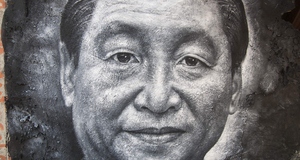Finding 'Love' in China: An Overview of Chinese Marriage Markets (BaiFaXiangQin)
By
2014, Vol. 6 No. 12 | pg. 3/3 | « Step 5: Meeting Face-to-FaceAccording to Stanley Milgram (1984), online relationships eventually have to move beyond the computer and have a face-to-face meeting to accept each others' full complexity as a human being. If the potential partners find each other compatible online, they will meet face-to-face on a date. The date's location is pre-determined online and the location reveals the man's financial situation and sincerity. Usually, men with more financial means will pick high-end Western restaurants, while those with regular financial means will pick quiet coffee joints, teashops, or fast-food restaurants like McDonalds or Kentucky Fried Chicken (Sun, 2012a). The women generally prefer crowded locations as they are frequently anxious about safety issues when meeting with the man for the first time (Gibbs, Ellison, & Lai, 2011). Once both of them meet face-to-face, online communication becomes progressively extraneous (Whitty & Carr, 2006). Potential matches treat the first date as a screening process and use it as a test to see whether they should continue with the relationship (Long, 2010, Whitty, 2008). Both the potential partners are highly critical on this date and observe each other meticulously to try to discern whether they are suited for a serious relationship that might lead to marriage. In certain cases, the parents will accompany the potential partners to help break the ice (Sun, 2012a).ConclusionDespite the rising popularity of Marriage Markets in mainland China, especially in Shanghai, the rate of success is very low (Bolsover, 2011; Warner, 2010) due to various variables. Many singles today do not approve of BaiFaXiangQin and prefer to engage in voluntary dating relationships, viewing them as acceptable options in finding a marital partner. Since the new Marriage Law was passed in 1950, the custom of arranged marriages is slowly giving way to common dating behaviours (Xu, 1994). Many women in cities now want more independence and personal freedom (Fincher, 2014; Lee & Subramanian, 2011), and BaiFaXiangQin goes against those principles. Despite this trend, according to Fincher (2014), the message of "leftover women" driven by China's state media (Fong & Fincher, 2014) has been so effective that it has led to a domino effect of negative consequences, one of the key reasons that has driven marriage markets today despite its low success rate. As long as the patriarchal culture in China persists (To, 2013; Fincher, 2014), Marriage Markets and BaiFaXiangQin will remain a permanent fixture in mainland China. ReferencesAhuvia, A. C., & Adelman, M. B. (1992). Formal intermediaries in the marriage market: A typology and review. Journal of Marriage and the Family, 54, 452–463. Alexander, C. N., & Knight, G. W. (1971). Situated identities and social psychological experimentation. Sociometry, 24, 65-82. Alexander, C. N., & Rudd, J. (1981). Situated identities and response variables. In J.T.Tedeschi (eds.), Impression management theory and social psychological research (pp. 83-103). New York: Academic Press. Albright, L., Kenny, D. A., & Malloy, T. E. (1988). Consensus in personality judgments at zero acquaintance. Journal of Personality and Social Psychology, 55, 387-395. Boase, J., & Wellman, B. (2004). Personal relationships: On and off the Internet. Cambridge University Press. Bolsover, G. (2011, October 17). What's it like inside Shanghai's 'Marriage Market'?. CNN. Retrieved May 27, 2014, from: http://travel.cnn.com/shanghai/life/people-behind-paper-846851 Borkenau, P., & Liebler, A. (1992). Trait inferences: Sources of validity at zero-acquaintance. Journal of Personality and Social Psychology, 62, 645-657. Brown, P., & Levinson, S. C. (1987). Politeness: Some universal in language usage. New York: Cambridge University Press. Chan, D. K. S., Ng, T. T. T., & Chin, M. H. (2010). Interpersonal relationships in rapidly changing Chinese Societies (pp. 515-532). In M. H. Bond (Eds.), The Oxford Handbook of Chinese Psychology. New York, United States: Oxford University Press. Chang, H-C., & Holt, G. R. (1991a). The concept of yuan and Chinese interpersonal relationships. In S. Ting-Toomey & F. Korzenny (Eds.), Cross-cultural interpersonal communication (pp. 28-57). Newbury Park, CA: Sage. Chang, H-C., & Holt, G. R. (2002, November). Yuan (predestined relations): The fate of affective communication. Paper presented at the annual meeting of National Communication Association, New Orleans, LA. Chang, S-C., & Chan, C. N. (2007). Preceptions of commitment change during mate selection: The case of Taiwanese newlyweds. Journal of social and Personal Relationships, 24(1), 55-68. doi: 10.1177/026540750072583 Chou, K. L., Chi, I., & Chow, N. W. S. (2004). Sources of income and depression in elderly Hong Kong Chinese: Mediating and moderating effects of social support and financial strain. Aging & Mental Health, 8, 212–221. Coontz, S. (2005). Marriage, a history. New York, NY: Viking. DePaulo, B. M. (1992). Nonverbal behaviour and self-presentation. Psychological Bulletin, 11, 203-243. Efran, M. G. (1974). The effect of physical appearance on the judgment of guilt, interpersonal attraction, and severity of recommended punishment in a simulated jury task. Journal of Research in Personality, 8, 45-54. Ekman, P., & Friesen, W. V. (1974). Detecting deception from body or face. Journal of Personality and Social Psychology, 29, 288-298. Fali, H., Jin, G. Z., & Xu, L. C. (2012). Love and money by parental matchmaking; Evidence from urban couples in China. American Economic Review, 102(3), 555-560. Fincher, L. H. (2014). Leftover Women: The Resurgence of Gender Inequality in China. London, New York: Zed Books. Finkel, E. J., Eastwick, P. W., Karney, B. R., Reis, H. T., & Sprecher, S. (2012). Online dating: A critical analysis from the perspective of psychological science. Psychological Science in the public Interest, 13(1), 3-66. doi: 10.1177/1529100612436522 Fong, M., & Fincher, L. H. (2014, 24 April). If you are not married by 25, you are a 'leftover woman' in China. ChinaFile. Retrieved on June 11, 2014, from: http://www.huffingtonpost.com/2014/04/24/china-gender-inequality_n_5207388.html Gibbs, J. L., Ellison, N. B., & Lai, C. (2011). First comes love, then comes Google: An investigation of uncertainty reduction strategies and self-disclosure in online dating. Communication Research, 38, 70–100. Gilbert, R. Y. (1927). What's wrong with China. London: J.Murray. Goodwin, R. (1999). Personal relationships across cultures. London: Routledge. Goodwin, R., & Findlay, C. (1997). 'We were just fated together' ... Chinese love and the concept of yuan in England and Hong Kong. Personal Relationships, 4, 85–92. Hertlein, K. M., & Ancheta, K. (2014). Advantages and disadvantages of technology in relationships: Findings from an open-ended survey. The Qualitative Report, 19(22), 1-11. Retrieved from http://www.nova.edu/ssss/QR/QR19/hertlein22.pdf Ho, D. Y. F. (1976). On the concept of face. American Journal of Sociology, 81, 867-884. Hu, H-C. (1944). The Chinese concepts of face. American Anthropologist, 46(1), 45-64. Hunt, K. (2013, November 4). Glut of women at Shanghai's marriage market. CNN. Retrieved April 21, 2014, from: http://edition.cnn.com/2013/11/03/world/asia/shanghai-marriage-market/ Hwang, K. K., & Han, K. H. (2010). Face and morality in Confucian society. In M.H. Bond (Eds.), The Oxford Handbook of Chinese Psychology (pp. 479-498). New York, United States: Oxford University Press. Jiang, L., Bazarova, N. N., & Hancock, J. T. (2011). The disclosure intimacy link in computer mediated communication: An attributional extension of the hyperpersonal model. Human Communication Research, 37, 58–77. Kotajima, Y. (1990). On "en": China and Japan. Tokyo: Shintensha. Lee, D. J., & Subramanian, S. (2011, October 19). Fo China's educated single ladies, finding love is often a struggle. The Atlantic. Retrieved June 11, 2014, from: http://www.theatlantic.com/international/archive/2011/10/for-chinas-educated-single-ladies-finding-love-is-often-a-struggle/246892/ Liu, J. (2004). Holding up the sky? Reflections on marriage in contemporary China. Feminism and Psychology, 14, 195–202. Liu, Y. (1988). Marriage and the family. Beijing Review, 31 (May 23–29), 23–25. Long, B. L. (2010). Scripts for online dating: A model and theory of online romantic relationship initiation (Unpublished doctoral dissertation). Bowling Green State University, OH. McKenna, K. Y. A., Green, A. S., & Gleason, M. E. J. (2002). Relationship formation on the Internet: What's the big attraction? Journal of Social Issues, 58, 9–31. Milgram, S. (1984). Cities as social representations. In R.M. Farr & S. Moscovici (Eds). Naumann, L. P., Vazire, S., Rentfrow, P. J., & Gosling, S. D. (2009). Personality judgments based on physical appearance. Personality and Social Psychology Bulletin, 35(12), 1661-1671. doi:10.1177/0146167209346309 Pei, X., & Pillai, V. K. (1999). Old age support in China: The role of the state and the family. International Journal of Aging and Human Development, 49, 197–212. Pozen, R. C. (2013). Tackling the Chinese pension system. Paulson Policy Memorandum. The Paulson Institute. Reis, H. T., & Shaver, P. (1988). Intimacy as an interpersonal process. In S. Duck (Ed.), Handbook of personal relationships (pp. 367–389). Chichester, UK: Wiley. Riggio, R. E., Widaman, K. F., Tucker, J. S., & Salinas, C. (1991). Beauty if more than skin deep: Components of attractiveness. Basic and Applied Social Psychology, 12, 423-439. Silverstein, M., Zhen, C., & Li, S. (2006). Intergenerational transfers and living arrangements of older people in rural China: Consequences for psychological well-being. Journal of Gerontology, 61B, 256–266. Smith, A. H. (1894). Chinese characteristics. New York: F.H. Revell Company. Stander, V. A., Hsiung, P-C., & MacDermid, S. (2001). The relationship of attributions to marital distress: A comparison of mainland Chinese and U.S. Couples. Journal of Family Psychology, 15(1), 124-134. doi: 10.1037/0893-3200.15.1.124 Sun, F. (1998). Ageing of the population in China: trends and implications. Asia Pacific Population Journal, 13, 75-92. Sun, P-D. (2012a). Who will marry my daughter?: Shanghai's Marriage Market and 'BaiFaXiangQin'. Beijing, China: China Social Sciences Press. (In Chinese) Sun, P-D. (2012b). Parental matchmaking for children's marriage: An analysis of the marital spouse selection behaviours in the Parental Matchmaking Corner in Shanghai. South China Population, 27(110), 30-36. (In Chinese) Tang, S. & Zuo, J. (2000). Dating attitudes and behaviors of American and Chinese college students. Social Science Journal,37, 67–78. To, S. (2013), Understanding Sheng Nu ("Leftover Women"): the Phenomenon of Late Marriage among Chinese Professional Women. Symbolic Interaction, 36, 1–20. doi: 10.1002/symb.46 Todorov, A., Mandisodza, A. N., Goren, A., & Hall, C. C. (2005). Inferences of competence from faces predict election outcomes. Science, 308, 1623-1626. Tong, S. T., & Walther, J. B. (2011). Just say ''no thanks'': Romantic rejection in computer-mediated communication. Journal of Social and Personal Relationships, 28, 488–506. Tully, J. (2013, August 17). Chinese parents turn to market to marry off late-20s 'leftover ladies'. The Seattle Times. Retrieved April 21, 2014, from: http://seattletimes.com/html/nationworld/2021629359_leftoverladiesxml.html Ueno, C. (1987). Selectable en and unselectable en. In Y. Kurita (Ed.), Japanese human relationship. Tokyo: Domesu Shuppan. Warner, D. (2010, February 11). Shanghai's marriage market: Bridal bliss or marital mayhem?. CNN. Retrieved July 11, 2014, from: http://travel.cnn.com/shanghai/play/sausage-fest-2020-future-shanghai-marriage-market-086672 Wei, Z. (1983). Chinese family problems: Research and trends. Journal of Marriage and the Family, 45, 943–948. Whitty, M. T., & Carr, A. (2006). Cyberspace romance: The psychology of online relationships. New York, NY: Palgrave Macmillan. Whitty, M. T. (2008). Revealing the "real" me, searching for the "actual" you: Presentations of self on an internet dating site. Computers in Human Behavior, 24, 1707–1723. Winter, C. (2014, February 12). Does the West have a monopoly on romantic love? Retrieved April 21, 2014, from: http://www.pri.org/stories/2014-02-12/does-west-have-monopoly-romantic-love Wong, O. H. (2003). Postponement or abandonment of marriage? Evidence from Hong Kong. Journal of Comparative Family Studies, 34, 531–554. Xu, X. (1994). The determinants and consequences of the transformation from arranged marriages to free-choice marriages in Chengdu, the People's Republic of China. In P. L. Lin, K. W. Mei, & H. C. Peng (eds), Marriage and the family in Chinese societies (pp. 249-266). Indianapolis, IN: University of Indianapolis Press. Yan, J., Chen, C., & Murphy, M. (2005). Social support for older adults in China. Psychological Science (China), 28, 1496–1499. (In Chinese) Yang, K. S. (1988). The Concept and function of yuan in Chinese society. In K. S. Yang (Eds.), The psychology of Chinese people (pp. 123-154). Taipei: Kwei Kwan. Yang, Y-J. (2011, May 30). A marriage made in the city park. China Daily USA. Retrieved June 11, 2014, from: http://usa.chinadaily.com.cn/life/2011-05/30/content_12602013.htm Zhou, D-D. (2009). The research regarding the flourish of dating fairs. Legal and Economy (China), 194, 137-139. (In Chinese) Suggested Reading from Inquiries Journal
Inquiries Journal provides undergraduate and graduate students around the world a platform for the wide dissemination of academic work over a range of core disciplines. Representing the work of students from hundreds of institutions around the globe, Inquiries Journal's large database of academic articles is completely free. Learn more | Blog | Submit Latest in Sociology |


















